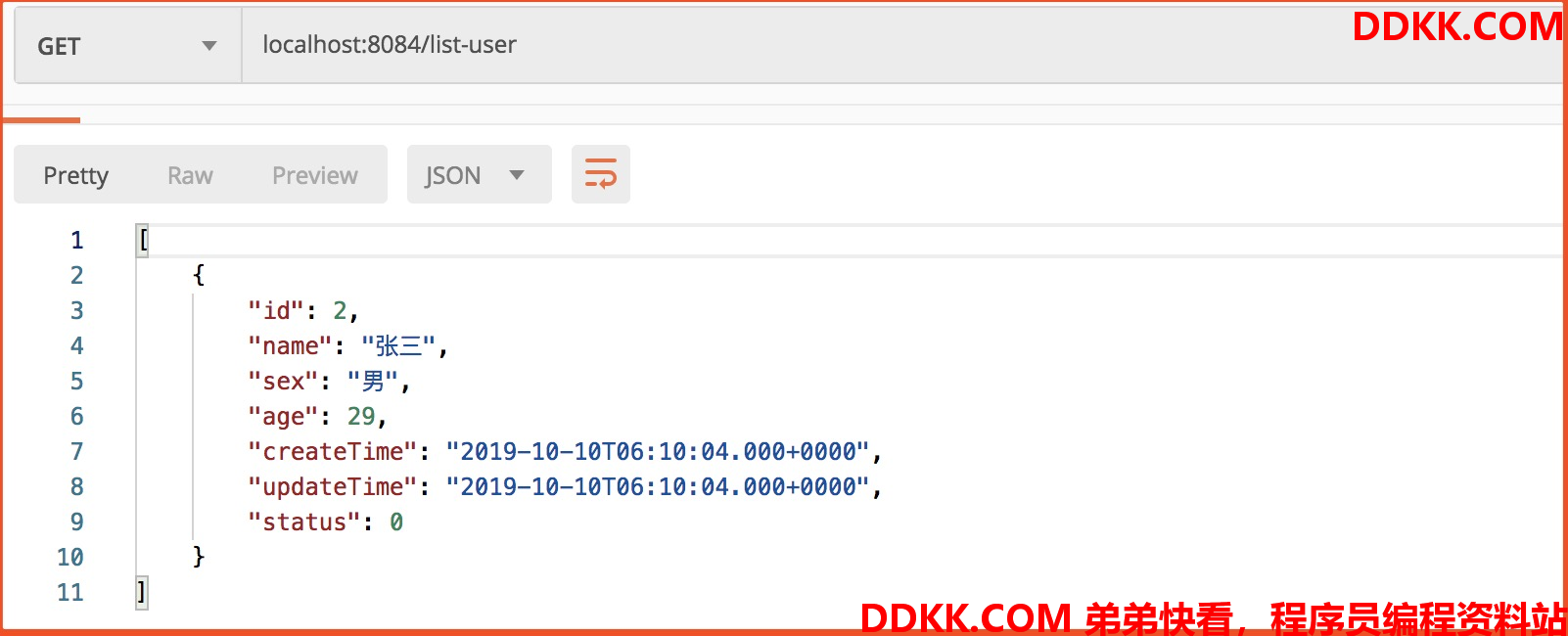ShardingSphere实现分表+ 读写分离
这篇博客通过ShardingSphere实现分表不分库+读写分离,并在文章最下方附上项目Github地址。
一、项目概述
1、技术架构
项目总体技术选型
SpringBoot2.0.6 + shardingsphere4.0.0-RC1 + Maven3.5.4 + MySQL + lombok(插件)
2、项目说明
场景 在实际开发中,如果表的数据过大,我们可能需要把一张表拆分成多张表,这里就是通过ShardingSphere实现分表+读写分离功能,但不分库。
3、数据库设计
分表 tab_user单表拆分为tab_user0表 和 tab_user1表。
读写分离 数据写入master库 ,数据读取 slave库 。
如图
master库

slave库

说明 初始数据的时候,这边只有 slave从库的tab_user0 我插入了一条数据。那是因为我们这个项目中Mysql服务器并没有实现主从部署,这两个库都在同一服务器上,所以
做不到主数据库数据自动同步到从数据库。所以这里在从数据库建一条数据。等下验证的时候,我们只需验证数据是否存入master库,数据读取是否在slave库。
具体的创建表SQL也会放到GitHub项目里
二、核心代码
说明 完整的代码会放到GitHub上,这里只放一些核心代码。
1、application.properties
server.port=8084
#指定mybatis信息
mybatis.config-location=classpath:mybatis-config.xml
#数据库
spring.shardingsphere.datasource.names=master0,slave0
spring.shardingsphere.datasource.master0.type=com.alibaba.druid.pool.DruidDataSource
spring.shardingsphere.datasource.master0.driver-class-name=com.mysql.jdbc.Driver
spring.shardingsphere.datasource.master0.url=jdbc:mysql://localhost:3306/master?characterEncoding=utf-8
spring.shardingsphere.datasource.master0.username=root
spring.shardingsphere.datasource.master0.password=123456
spring.shardingsphere.datasource.slave0.type=com.alibaba.druid.pool.DruidDataSource
spring.shardingsphere.datasource.slave0.driver-class-name=com.mysql.jdbc.Driver
spring.shardingsphere.datasource.slave0.url=jdbc:mysql://localhost:3306/slave?characterEncoding=utf-8
spring.shardingsphere.datasource.slave0.username=root
spring.shardingsphere.datasource.slave0.password=root
#数据分表规则
#指定所需分的表
spring.shardingsphere.sharding.tables.tab_user.actual-data-nodes=master0.tab_user$->{0..1}
#指定主键
spring.shardingsphere.sharding.tables.tab_user.table-strategy.inline.sharding-column=id
#分表规则为主键除以2取模
spring.shardingsphere.sharding.tables.tab_user.table-strategy.inline.algorithm-expression=tab_user$->{id % 2}
# 读写分离
spring.shardingsphere.masterslave.load-balance-algorithm-type=round_robin
spring.shardingsphere.masterslave.name=ms
#这里配置读写分离的时候一定要记得添加主库的数据源名称 这里为master0
spring.shardingsphere.sharding.master-slave-rules.master0.master-data-source-name=master0
spring.shardingsphere.sharding.master-slave-rules.master0.slave-data-source-names=slave0
#打印sql
spring.shardingsphere.props.sql.show=true
Sharding-JDBC可以通过Java,YAML,Spring命名空间和Spring Boot Starter四种方式配置,开发者可根据场景选择适合的配置方式。具体可以看官网。
2、UserController
@RestController
public class UserController {
@Autowired
private UserService userService;
/**
* 模拟插入数据
*/
List<User> userList = Lists.newArrayList();
/**
* 初始化插入数据
*/
@PostConstruct
private void getData() {
userList.add(new User(1L,"小小", "女", 3));
userList.add(new User(2L,"爸爸", "男", 30));
userList.add(new User(3L,"妈妈", "女", 28));
userList.add(new User(4L,"爷爷", "男", 64));
userList.add(new User(5L,"奶奶", "女", 62));
}
/**
* @Description: 批量保存用户
*/
@PostMapping("save-user")
public Object saveUser() {
return userService.insertForeach(userList);
}
/**
* @Description: 获取用户列表
*/
@GetMapping("list-user")
public Object listUser() {
return userService.list();
}
三、测试验证
1、批量插入数据
请求接口
localhost:8084/save-user
我们可以从商品接口代码中可以看出,它会批量插入5条数据。我们先看控制台输出SQL语句

我们可以从SQL语句可以看出 master0数据源 中 tab_user0 表插入了三条数据,而 tab_user1 表中插入两条数据。
我们再来看数据库
master.tab_user0

master.tab_user1

完成分表插入数据。
2、获取数据
我们来获取列表接口的SQL。
select * from tab_user
请求接口结果

结论 从接口返回的结果可以很明显的看出,数据存储在master主库,而数据库的读取在slave从库。
注意 ShardingSphere并不支持CASE WHEN、HAVING、UNION (ALL),有限支持子查询。这个官网有详细说明。